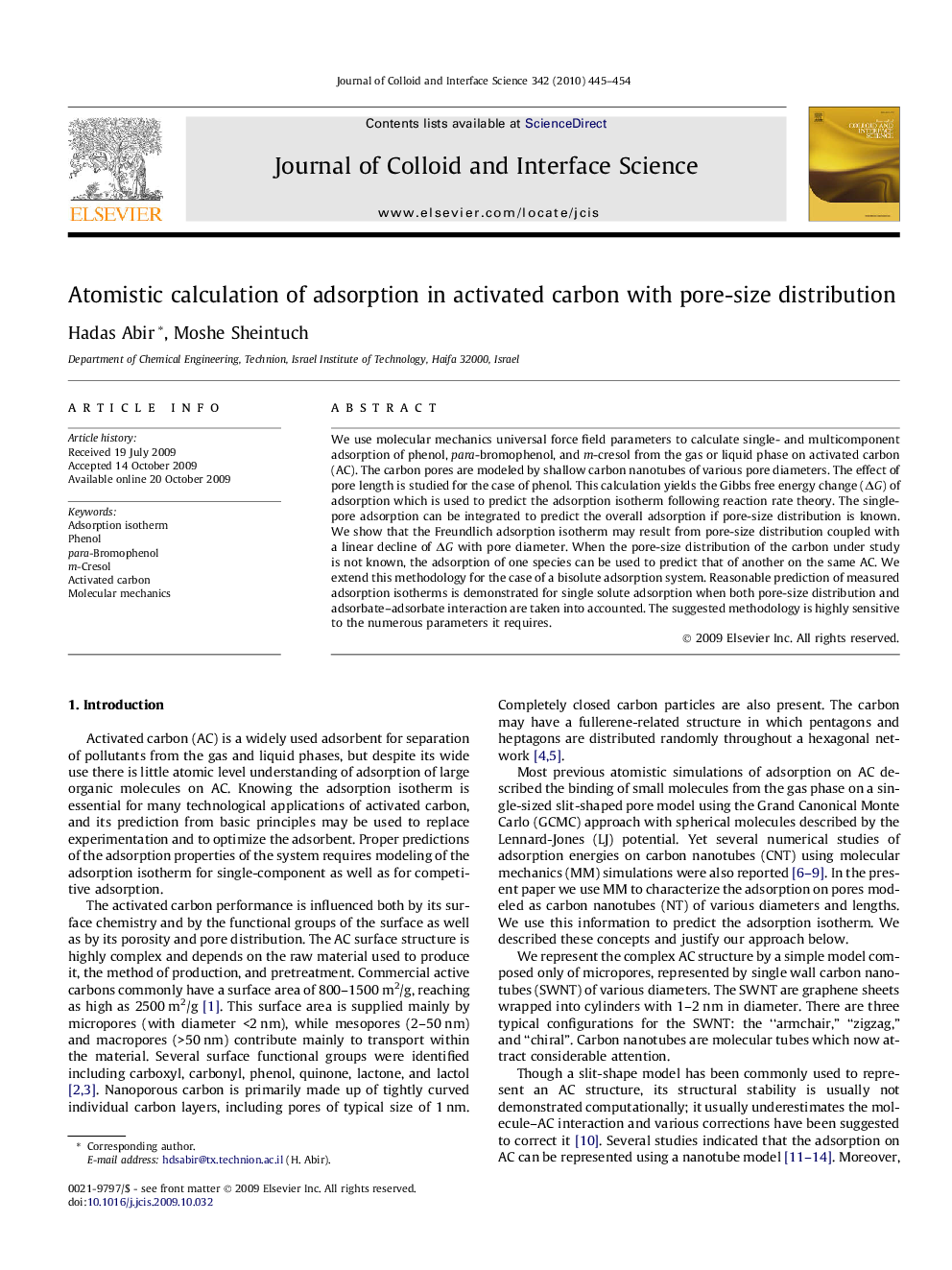| Article ID | Journal | Published Year | Pages | File Type |
|---|---|---|---|---|
| 609541 | Journal of Colloid and Interface Science | 2010 | 10 Pages |
We use molecular mechanics universal force field parameters to calculate single- and multicomponent adsorption of phenol, para-bromophenol, and m-cresol from the gas or liquid phase on activated carbon (AC). The carbon pores are modeled by shallow carbon nanotubes of various pore diameters. The effect of pore length is studied for the case of phenol. This calculation yields the Gibbs free energy change (ΔG) of adsorption which is used to predict the adsorption isotherm following reaction rate theory. The single-pore adsorption can be integrated to predict the overall adsorption if pore-size distribution is known. We show that the Freundlich adsorption isotherm may result from pore-size distribution coupled with a linear decline of ΔG with pore diameter. When the pore-size distribution of the carbon under study is not known, the adsorption of one species can be used to predict that of another on the same AC. We extend this methodology for the case of a bisolute adsorption system. Reasonable prediction of measured adsorption isotherms is demonstrated for single solute adsorption when both pore-size distribution and adsorbate–adsorbate interaction are taken into accounted. The suggested methodology is highly sensitive to the numerous parameters it requires.
Graphical abstractCalculated weight adsorption isotherm using two extreme ΔG values, along with their comparison with experimental data of Wu et al. and Sheindorf et al. and visualization of the adsorption model.Figure optionsDownload full-size imageDownload high-quality image (58 K)Download as PowerPoint slide
